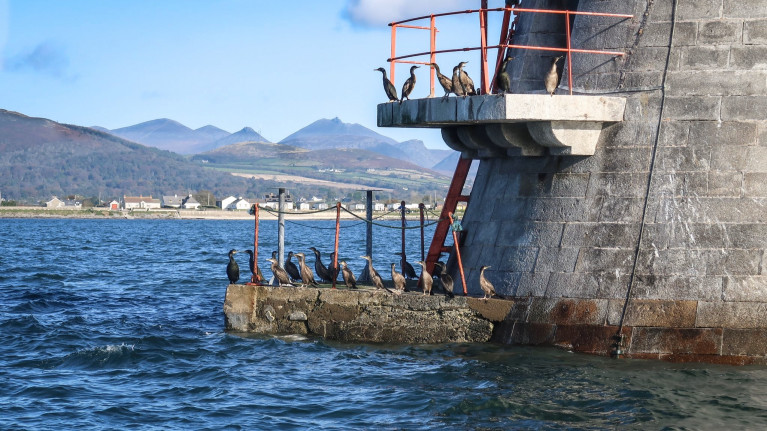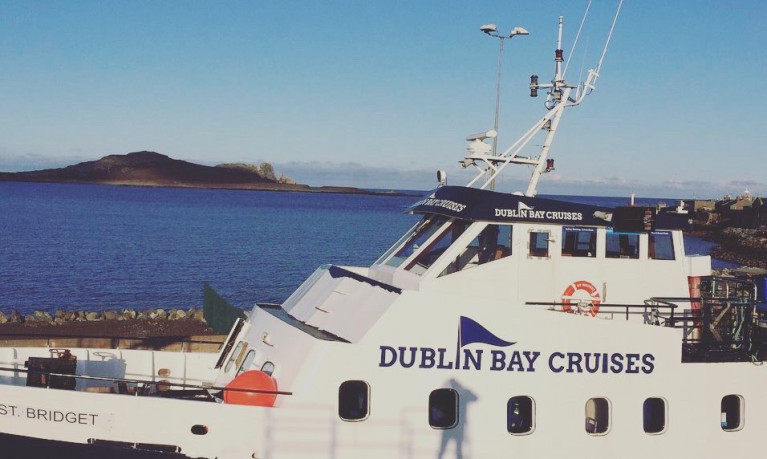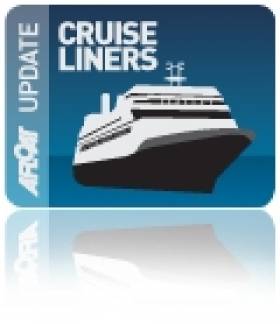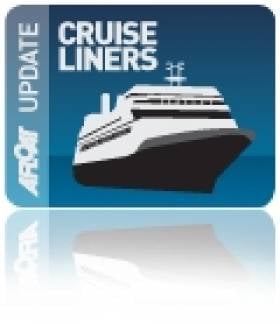Displaying items by tag: Cruises
The summer season sees Carlingford Lough Ferry kicking off with the launch of its passenger 'cruise' schedule.
As Dundalk Democrat writes, last week dates were released for their June Sunset cruises, which commences this Saturday June 12th and tickets are already being snapped up.
Carlingford Lough is an area of outstanding natural beauty, and is at its most beautiful as the sun sets over the Cooley Peninsula and the majestic Mourne Mountains.
These new sunset lough cruises are specifically designed to offer customers the opportunity to take a safe and socially distanced cruise on the iconic Carlingford Lough.
While onboard (Aisling Gabrielle), passengers will enjoy a fascinating audio tour, that will offer insights into the myths and legends of this majestic Lough, its formation as a glacial fjord, and its abundance of wildlife and bird life, in addition to live music and entertainment.
Carlingford Lough Ferry launched it’s passenger cruise service, ‘Carlingford Lough Cruises’ in 2019, and these passenger cruises on the Lough have since proved extremely popular with the number of cruises increasing annually.
This summer, they are extending their range of cruises once again and offering a host of new cruise experiences.
Their popular Lough & Lighthouse cruises return throughout July and August, with June featuring a new Sunset inner Lough cruise to start the summer season of cruises.
For more details on other themed cruises and prices click here.
The May Bank Holiday weekend finally marked a particularly eagerly awaited return of Dublin Bay Cruises, following Covid19's dramatic impact on last year's reduced season, writes Jehan Ashmore.
Normally the season starts during the St. Patrick's Festival and so the 2021 season at last can cater for domestic demand from Dubliners and given current restrictions, those from neighbouring counties.
According to Dublin Bay Cruises website, all passengers are asked to bring a face mask and scarf to cover your face while on board. Also to adhere to the 2 metre social distance recommendation when queing to board the two-deck passenger vessel.
Excursions can be taken from 9 cruise options, that collectively connect Dublin Port (Liffey Quays), Dun Laoghaire (East Pier) and Howth (West Pier) and from where is a cruise around Ireland's Eye. In addition a final cruise of the day is back in Dublin Bay with a Dun Laoghaire-around Dalkey Island round trip.
The first passengers to board St. Bridget took place on Saturday when the summer season's opening cruise began to those wanting to get away on to the sea and see the broad variety of natural and mademade coastal landmarks. Also opportunites to spot marine wildlife.
In fact, Afloat observed on Sunday, a repeat of the around Dalkey Island cruise, which involved St. Bridget make a late afternoon transit through Dalkey Sound and rounding off Sorrento Point into the splended scenery of Killiney Bay.
There to welcome the season's inaugural patrons were the crew of the St. Bridget, which presents a most smart appearance of a dark blue hull and white superstructure. The vessel has a bar within the 96 capacity excursion vessel which tge operator also provides for private and corporate charter.
A fresh livery was applied following a 'lift' into the dry dock at Howth Boatyard (see photo) with St. Bridget undergoing routine preparations for this sailing season. Up to then the former Aran Islands /West coast ferry had spent the Winter and Spring tied up as usual in Grand Canal Dock Basin.
Now that St. Bridget is back operating, the excursion vessel is based in Dun Laoghaire Harbour, while alongside St. Micheals Wharf.
Cruise Industry Body To Discuss Funding Changes
#Cruises - Cruise Ireland's members will meet in January to discuss controversial proposals to change the way the organisation is funded.
At November's board meeting of the industry body representing interests in the Irish cruise industry, the Port of Cork's commercial manager Michael McCarthy charged that Ireland's biggest ports in Dublin and Cork should no longer be Cruise Ireland's primary funders.
McCarthy cited the wish for greater contributions from other tourist venues that reap the biggest business from Ireland's cruise traffic.
Echoing his sentiments, Cruise Ireland chair Eamonn O'Reilly noted that the body's current subscription model of 'the bigger you are, the more you pay' was no longer tenable in an increasingly competitive cruise marketplace - in light of plans by Dun Laoghaire, among other ports, to attract cruise liners.
O'Reilly, who is chief executive of the Dublin Port Company, proposed of a flat membership fee of €10,000 - which was objected to by a number of those present.
And though the matter was deferred for further discussion in the New Year, O'Relly shared Dublin Port's position that it would not not commit to funding Cruise Ireland under the current model beyond 2014.
Other matters discussed at November's meeting included a review of Cruise Ireland's marketing strategy at important international trade shows, in order to more effectively sell Ireland as a key European cruise destination.
Cruise Ireland's next meeting will take place on 21 January 2014.
Cruise Line Business Worth €60m
There are many indirect economic and tourism benefits to Ireland from this sector, as well as the benefit of introducing Ireland to new markets and business opportunities. Such cruise visits also help to showcase Ireland's world class shore products, destinations and highlights all that Ireland has to offer visitors.
One of Ireland's advantages is the strategic and geographic spread of its numerous ports, many of which are in close proximity to world class tourism destinations.
Speaking at Seatrade Miami this week, the Chairman of Cruise Ireland, Mr Brendan Keating said "Cruise Ireland aims to promote the island of Ireland as an excellent cruising ground for cruise companies. With the total economic contribution of €60 million, we need to ensure that Ireland maintains this level of business and looks at methods of growing it in the future."
He continued; "Cruise Ireland is looking forward to the 2011 season with confidence. We expect to see further growth in ship calls and the continued establishment of Ireland as an important cruise liner destination. Marketing Cruise Ireland at Seatrade will hopefully encourage further cruise bookings to Ireland in 2012 and 2013."
Representatives from Cruise Ireland attended Seatrade Miami to promote the Island of Ireland as a cruise line tourism destination. This event is attended by over 10,000 delegates, cruise line operators, the world's leading cruise tourism destinations and 118 countries.
Each year, all of the international operators including Princess Cruises, Royal Caribbean, Cunard, Holland America Line and NCL visit Irish ports to access Ireland's world class destinations.
The 2011 season will kick off in early April with calls by the MV Queen Victoria to Cork, the MV Boudicca to Dublin and the MV Ocean Nova to Belfast
Cruise-Talk at the Holiday World Show
The following ferry and cruise operators are exhibiting at the show: Azamara Cruises, Celebrity Cruises, Celtic Link Ferries, Cruise & Maritime Voyages, Cruise Holidays, Travel.ie, Hurtigruten, John Galligan Travel, MSC Cruises, Princess Cruise Lines, Pullmantur Cruises, Regent Seven Seas Cruises, Royal Caribbean Cruise Line, Saga, Silversea Cruises, Thomas Cook and Voyages To Antiquity.
Also exhibiting is Emerald Star for those interested in taking a cabin-cruiser holiday on the Shannon.
For opening times of Holiday World Show (incorporating the Caravan & Motor Home Show) see below
Friday 28 January 1.00 pm - 8.00 pm
Saturday 29 January 11.00 am - 5.30 pm
Sunday 30 January 11.00 am - 5.30 pm
For a full listing of exhibitors, ticket prices and further information about the show logon to www.holidayworldshow.com
































































